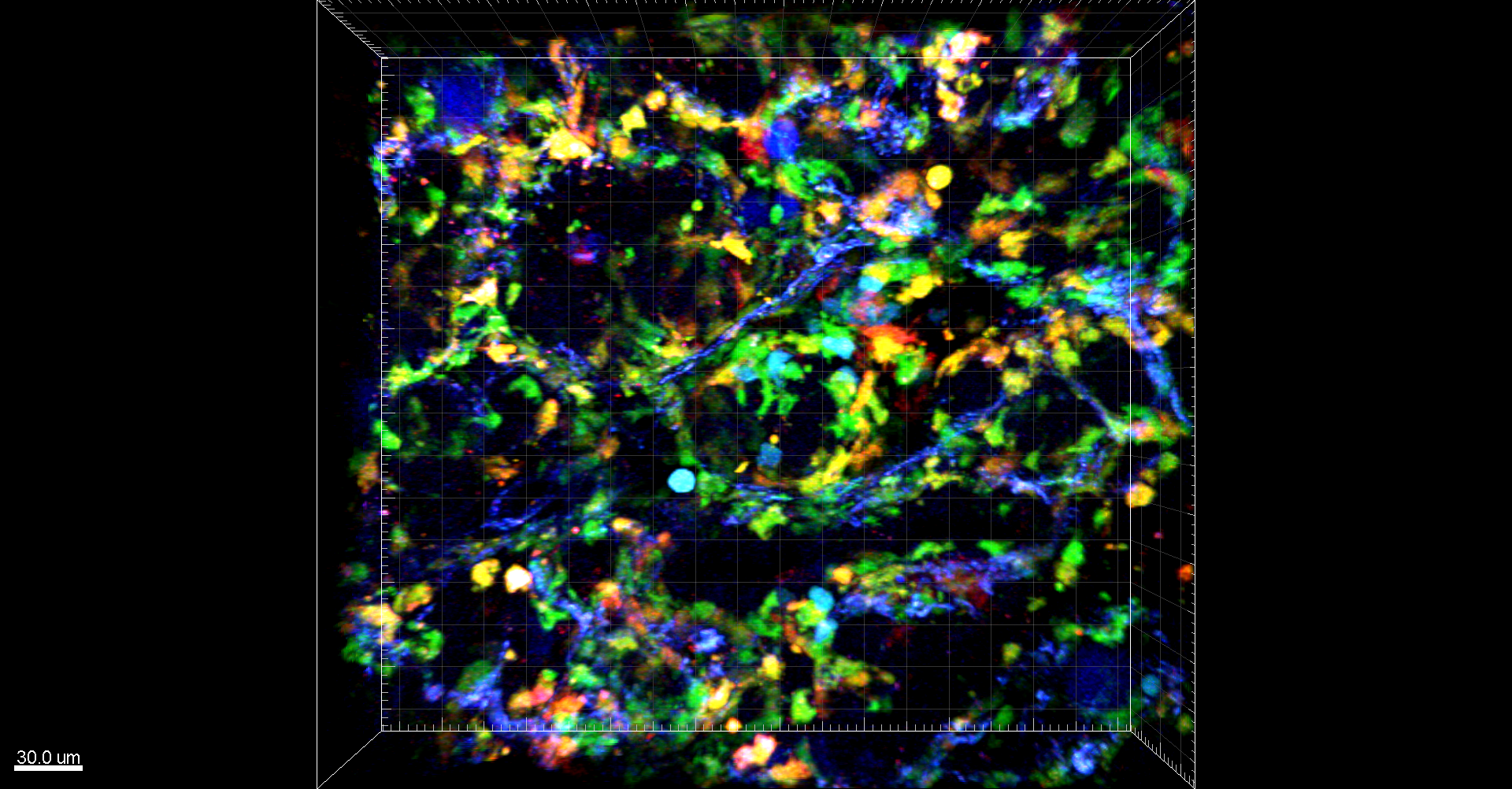Curing Cancer through Immunity
Q: Can we learn how the Immune System is Regulated in Cancer and then Apply that Learning Toward De-repressing it? The goal of this project is to discover cell types (allies!) and immune circuits that promote anti-tumor immune responses. These can then be enhanced to generate the next series of cures for cancer. This project interacts strongly with the UCSF Immunoprofiler Initiative as well as the Archetypes project.
Current Projects: Myeloid Biology in the TME. Using live-imaging, we found that T cells in the tumor microenvironment were being ‘captured’ into non-stimulatory synapses by what turned out to be macrophages (Engelhardt et al. Cancer Cell 2012). This represents an inhibitory archetype and we are currently seeking to understand these and how T cells and immunity becomes depressed in this archetype.
In Broz et al Cancer Cell 2014, we dissected the entire myeloid lineage and discovered a subset of tumor-resident CD103+ DC that oppose macrophages and form the basis of a 'Class I archetype' of anti-tumor immunity. We provided genetic signatures that define the key myeloid cell types in patients and showed that patients with higher numbers of those kinds of DC live longer, without treatment. In Roberts et al Cancer Cell 2016, we further showed how those cells are critical in delivering tumor antigens to lymph nodes where they further disseminate that antigen to other dendritic cells and activate T cells. In Headley et al Nature 2016, we showed how the same opposition of macrophages versus DC was critical in determining metastatic success. We are very actively seeking to understand how to modulate the balance of these cells to complement checkpoint blockade. In Barry et al. 2018, we showed that these cells were strong biomarkers in human melanoma patients, defining those patients likely to respond to checkpoint blockade drugs. Finally, in Binnewies et al 2019, we defined the circuitry for a second DC subset (cDC2) whose phenotype is regulated by Treg cells and which is responsible for driving strong anti-tumor CD4 immune responses ('Class II archetypes').
Historical (Checkpoint Blockade). Years ago, I made antibodies against the then-unknown molecule CTLA-4, demonstrated that these could either deliver or block inhibitory signals to T cells and determined that those antibodies could be used to augment T cell responses in vaccination, in responses to super-antigens and multiple other model systems. This checkpoint blockade quickly became best-known for augmenting T cell response to tumors. Our method (Krummel, Leach, Allison) became the first patent for Checkpoint immunotherapy and is the science underlying Yervoy, the first approved Immunotherapy drug and the 2018 Nobel Prize in medicine. This work was also the sources for the terms 'Harnessing' or 'Unleashing' immunity and the general term for many current therapies, based on modulating costimulatory molecules, 'Checkpoint Blockade'.
